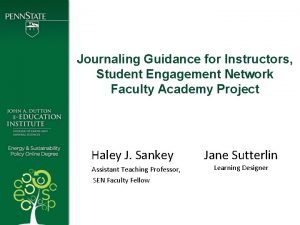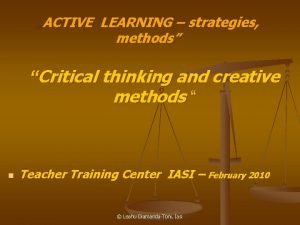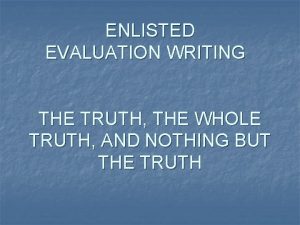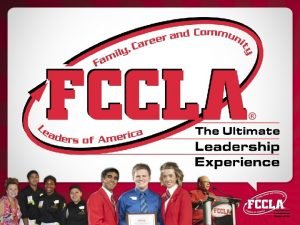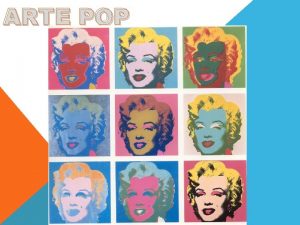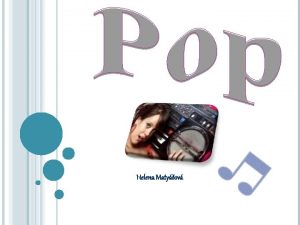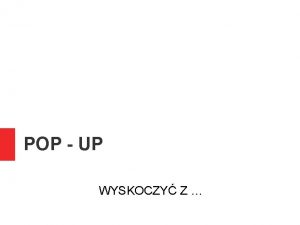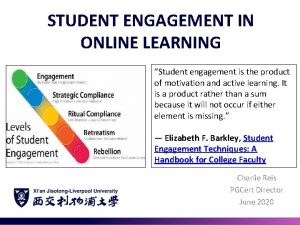Structures to Promote Student Engagement IMSA Fusion POP
















- Slides: 16

Structures to Promote Student Engagement IMSA Fusion POP Workshop April Capuder acapuder@sd 81. org

Goals 1. Learn basic principles of cooperative learning 2. Experience and learn cooperative structures that can be used by students to build knowledge, process information, present information and build teams. 3. Develop team building ideas to promote cooperation between students.

Team Management Mat 1. Used to help organize and manage students 2. Number in center of your MAT is the Team number 3. The number in the colored squares is a student’s number for that seat in the team 4. Student 1 & 2 and Student 3 & 4 are considered Shoulder partners 5. Student 1 & 4 and Student 2 & 3 are

Rally. Robin: Non-content 1. Teacher announces question and gives Think time. Partner A goes 1 st , sharing one idea per turn. 2. After the 1 st partner shares one idea, partner B shares one idea; repeat. 3. You “Rally” the topic like this until the teacher calls time. If you were a vending machine, think of items you might dispense and why?

Rally. Robin: Content 1. Teacher announces question and gives Think time. Partner A goes 1 st , sharing one idea per turn. 2. After the 1 st partner shares one idea, partner B shares one idea; repeat. 3. You “Rally” the topic like this until the teacher calls time. Share one idea at a time what your currently know about Cooperative Learning, including perceived benefits and shortcomings?

PIES: Basic Principles of Kagan Rally. Robin Analysis 1. Positive Interdependence: Students gain from good answers from each other. 2. Individual Accountability: Individual public performance is required by each partner 3. Equal Participation: Participation is approximately equal, each partner took turns. 4. Simultaneous Interaction: Percent of students that are overtly interacting at once, 50%.

Single Round. Robin 1. Teacher announces topic and gives think time. 2. Using the topic given, partner 1 goes 1 st. 3. After the 1 st partner shares one idea, team “Round” the topic until each teammate has had one turn. If you could be anyone for a week, who would it be? Explain why?

Single Round. Robin 1. Teacher announces topic and gives think time. 2. Using the topic given, partner 1 goes 1 st. 3. After the 1 st partner shares one idea, team “Round” the topic until each teammate has had one turn. Name one of the four basic principles of cooperative structures.

FUN Board 1. Each person take a white board and marker 2. Divide board into 4 quadrants

Mix – Pair - Share 1. Students stand up and silently “Mix” around the classroom. 2. Listen for teacher to call “Pair”. 3. Pair up with the person closest to you and high five. If you don’t have a partner, keep your hand up until you do. 4. Teacher asks a questions and gives Think Time. 5. Partners share using: Rally. Robin or Timed Pair Share

Timed Pair Share 1. Teacher announces question and gives Think time: you will be sharing your FUN board. 2. Partner A shares and Partner B listens until time is up. 3. Listen for Beep to Switch Roles, and share again. 4. Partners tell each other “thanks for sharing” Partner whose head is closest to ceiling will share FUN board first

Team. Building Is a process by which a group of 4 students with different backgrounds and experiences become a cooperative and caring team Should be done ____ times a week. Best done up against the “bell” Round. Robin: If you could be anyone for a week, who would it be? Explain why? (30 seconds person)

Class. Building Is a process by which a room full of students with different backgrounds and experiences become a caring community of active learners Should be done ____ times a week just for fun & done to help with content as appropriate. Stand. Up Hand. Up Pair. UP: Checking homework

Team Formation 1. Ideal to have teams heterogeneously grouped • High (Blue, seat 1 on team mat) • High Medium (Green, seat 4 on team mat) • Low Medium (Yellow, seat 2 on team mat) • Low (Read, seat 3 on team mat) 2. Ideal to have teams of 4. If have to have teams of 5 or 3 be sure to seat a HIGHLY motivated student in the 5 th or 3 rd seat. 3. Ideal to keep same teams for 6 weeks

Troubleshooting 90% of all struggles associated with incorporating cooperative structures into the classroom are due to not following 1. Teaming formation recommendations • Heterogenous (H, LM, L, HM) • 4 per team is best, if 5 per team seat 5 is most motivated student in that seat • Keep in teams for 6 weeks 2. Team. Building • Fun, No Content, Easy for All • 2 times/week • Best to fit in last 3 -5 minutes of class 3. Class. Building • Stand. Up, Move, Share • 1 time/week for fun & use with content as appropriate

Resources 1. Kagan Cooperative Learning by Dr. Spencer Kagan and Miguel Kagan 2. Classbuilding by Miguel Kagan, Laurie Kagan and Dr. Spencer Kagan 3. Timer. Tools, team. Tools and Selector. Tools by Kagan 4. Copies of presentation and handouts can be found here: http: //lms 8 thgrademath. weebly. com/presentations. html
 Moodle imsa
Moodle imsa Curriculum integration to promote student outcomes
Curriculum integration to promote student outcomes What does the pop in pop art stand for
What does the pop in pop art stand for Lucy makinson
Lucy makinson Student engagement presentation
Student engagement presentation Usyd sres
Usyd sres Student engagement network
Student engagement network Australasian survey of student engagement
Australasian survey of student engagement Student engagement data collection
Student engagement data collection Homologous structures
Homologous structures Mr. bolanos
Mr. bolanos Promote together
Promote together Active learning strategies to promote critical thinking
Active learning strategies to promote critical thinking The adams onis treaty what ideas did the measure contain
The adams onis treaty what ideas did the measure contain Eval bullets
Eval bullets What is fccla's mission
What is fccla's mission Which of the following is a strategy to promote leveling?
Which of the following is a strategy to promote leveling?

